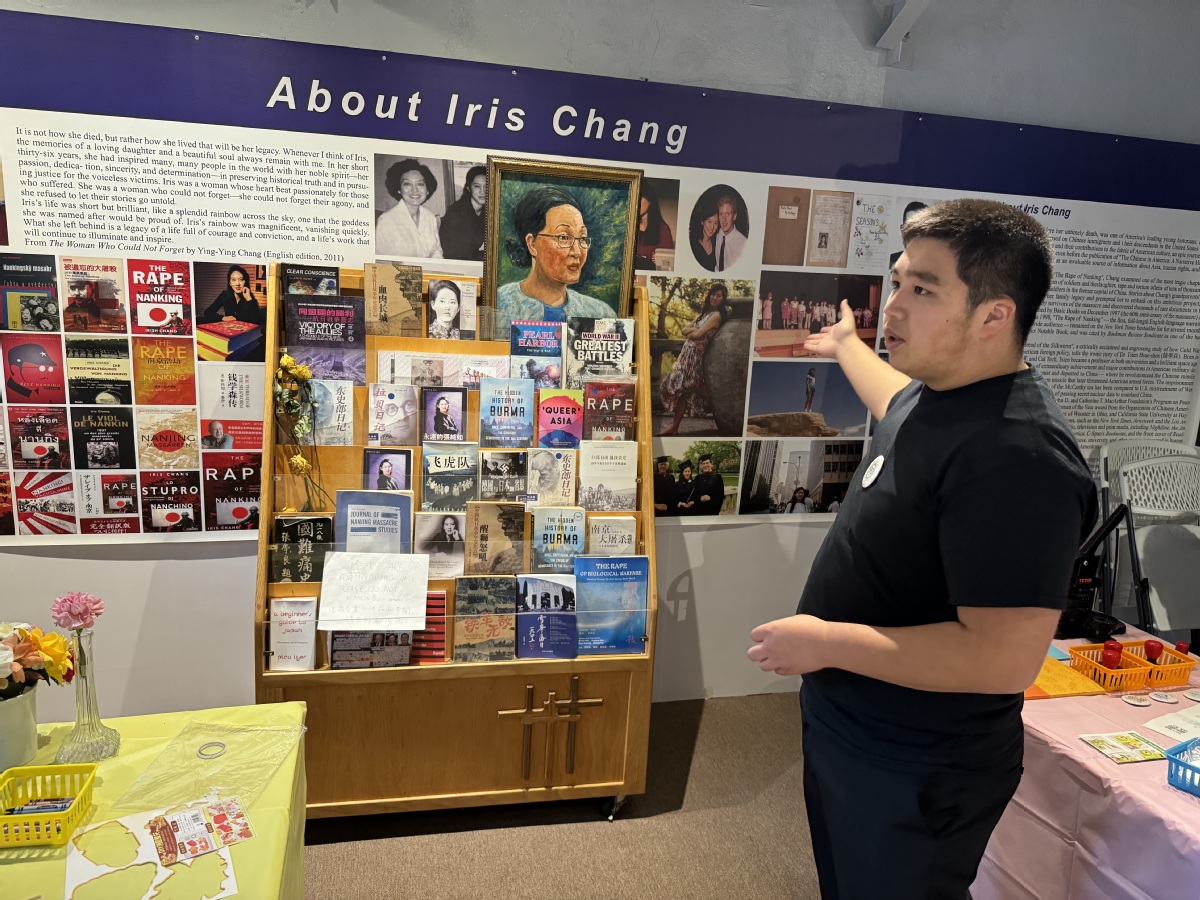Young voices keep WWII's forgotten chapter alive
By LIA ZHU in San Francisco | chinadaily.com.cn | Updated: 2024-02-01 10:58

On a bustling street in San Francisco's Chinatown, the WWII Pacific War Memorial Hall stands as testament to a history often overlooked.
Inside, a group of young docents were ready to guide visitors through the lesser-known history of China's wartime struggles and its alliance with the United States against fascism.
These aren't typical museum guides; they are high schoolers from the San Francisco Bay Area, driven by a desire to fill the gap in history curriculum and public awareness.
"Schools don't teach this," Guanxiang Cheng, head of the newly formed youth division of volunteers told China Daily. "We want to bridge that gap, share this history, and remind people of the friendship between China and America forged during the war."
The WWII Pacific War Memorial Hall, established in 2015, is the sole museum outside China dedicated to the often-overlooked chapter of Chinese resistance and US-China collaboration during World War II.
The 5,000 square-foot museum houses more than 100 artifacts of historic interest and hundreds of historical photos covering important aspects of China's War of Resistance Against Japanese Aggression (1931-1945).
World War II claimed 6 million Jewish lives in Europe, with the Holocaust memorialized in more than 100 museums worldwide.
The 35 million Chinese lives lost to the Japanese invasion, however, remain largely unheard of in the US.
The disparity struck these high school students, sparking the creation of the museum's "youth division" earlier this year.
The students' outreach efforts include "free open days" offering guided tours, and hands-on activities like drawing Flying Tiger planes and crafting peace badges.
"We are working to invite more teachers and students to visit the museum for the next free open days," Cheng said on Saturday.
Tina Sheng, an international education consultant who organized the Bay Area Chinese Teacher Group, was among the first teachers invited by the students.
"It's crucial for our students to see this history firsthand. The Nanjing Massacre, the Flying Tigers, the shared struggle against fascism — these are pieces missing from the history books in the US," Sheng told China Daily.
A former social studies teacher, Sheng said it is sad that there is only a small section in the textbook — just a few lines — explaining the entire Pacific theater of the war. "For example, Flying Tigers is very well known in China, but I'm surprised that not many Americans know about it," she added.
She was also frustrated that outside of classrooms, this part of history wasn't exhibited in any American museums.
"We do not know that China and America used to work together and fought along each other against their enemies," Sheng said. "Nowadays, with all the tensions, I hope knowing this part of history is going to help with that, after our students know that the two countries used to fight side by side for many significant battles."
The museum's mission extends beyond mere remembrance. It seeks to bridge the understanding between American and Chinese narratives of the war.
Exhibits showcase the Flying Tigers, the American pilots who soared over the treacherous "Hump" of the Himalayas to deliver vital supplies to their Chinese comrades. The battered parachute of a pilot, signed by his Chinese rescuers, speaks volumes of a forged brotherhood in the face of unimaginable adversity.
"In a world where tensions often overshadow shared histories, young voices have the power to rewrite the narrative and remind people that amidst the darkness of war, human connection illuminated the path to a hard-won peace," said Betty Yuan, a council member of the WWII Pacific War Memorial Hall and mentor of the student docents.
Annabelle Ning, a docent and a student from the French American International School in San Francisco, echoed that sentiment.
"In my school, there are few students of Chinese background, and most of them know nothing about this history," she said. "I think they will be surprised when they come and see these exhibits in person. It makes us realize how much is lost when we forget this shared past."
























